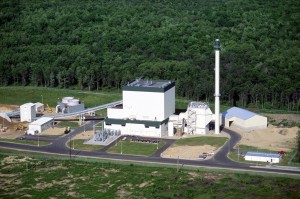This week the U.S. House Appropriations Committee is working on the annual spending bill that funds the Interior Department and the EPA, and there are all the usual arguments over how much the funding should increase. President Obama asked Congress to raise last year’s $30 billion by 10 percent, which is unlikely (the first draft actually reduces that amount slightly).
At least as important as the total dollars, though, is a provision buried deep inside the multi-page bill, which has touched off a new discussion about the future of biomass energy.
For nearly a decade, policy wonks have argued about whether energy generated from burning biomass ought to be considered renewable in the same way as wind, solar, or hydropower. Obviously trees and plants will continue to grow, die, and grow back – whether Congress says so or not. So this is not a disagreement on the merits of the issue, but on the politics. Put simply, some renewables are more politically correct than others.Fifteen years ago when Congress began to redesign federal policies to subsidize and otherwise encourage “renewable energy,” that term included solar, wind, geothermal, hydropower, biomass and several others. It was potentially very helpful to the Western Slope and other regions dominated by national forests and other public lands, because the overgrowth of the forests had left tens of thousands of acres of dead trees badly in need of thinning to restore forest health. If the timber companies could generate electricity by burning the small-diameter material that needed to be removed from the forests (or sell it to companies that would do so), it could make forest restoration easier, more profitable, and economically valuable to many communities.
There is a problem with that strategy, however. Some groups are so opposed to logging that they would rather let the forests die and burn than allow loggers to make a living cutting them – even if it means thinning and returning the forests to a more natural condition, and even if it would generate electricity that might reduce dependence on fossil fuels. So there ensued a bizarre congressional action in which the incentives for biomass energy were offered for plants, brush and trees of almost any kind, except not if that material came from public lands – the single biggest potential source, and the places most in need of thinning to avoid catastrophic wildfires.
Fortunately, the definition of biomass has been corrected since then, but replaced by an equally strange approach from the EPA and its allies, trying to stop logging by suggesting that biomass energy plants add to our “carbon debt.” In other words, we might be saving the forests, but at the unacceptable expense of global warming. The concern is serious enough that several States also joined the debate over whether biomass should be considered renewable and eligible for the same incentives as wind and solar. Trouble is, the Agriculture Department has analyzed the carbon issue in great detail and shown that the national forest carbon stocks “are stable or increasing on a national scale.” So forest health projects are not having the feared effect of transferring carbon from the forests to the atmosphere. Instead, the growth of new, young, healthy trees is actually nature’s best answer to the climate problem EPA is trying to address.
So this week, at least one congressional committee is trying to add a provision to the appropriation bill that would require EPA to base its biomass policies on the premise that forest biomass is a carbon-neutral form of energy. It would also require EPA to defer to State decisions on whether biomass qualifies as a renewable energy source. That is important because at least 37 states now require a percentage of electricity to be generated from renewables, and different states have different laws about what that includes.
In many states, a portion of the renewable energy must come from solar, but other sources (including biomass) may also be used. That could be a useful tool in much of the Rocky Mountain West, where millions of acres of forests are now dead, dying, and at risk of catastrophic fire. Combining the need to restore those forests with the desire to encourage renewable energy makes all the sense in the world. EPA should stay out of it.
(A version of this column appeared in the Grand Junction Daily Sentinel June 12, 2015)





I don’t see what is so great about improved caobrn standards. There really is no such thing as clean or cleaner coal. Why are we happy about crumbs? It is time to move wholesale to renewable energy geothermal, solar and wind. Stop the $10 $50 billions in subsidies to dirty oil and use this $ to give tax incentives for fossil to convert. Let’s stop this deplorabe, very healthy status quo now.
I love the way people make up numbers like “$10-$50 billions in subsidies” to oil. Which is it, 10 or 50? As if we don’t also spend billions subsidizing the renewables you mentioned. How about this – let’s end all subsidies for all energy, and let the marketplace determine which forms of energy American consumers want?
Comments on this entry are closed.